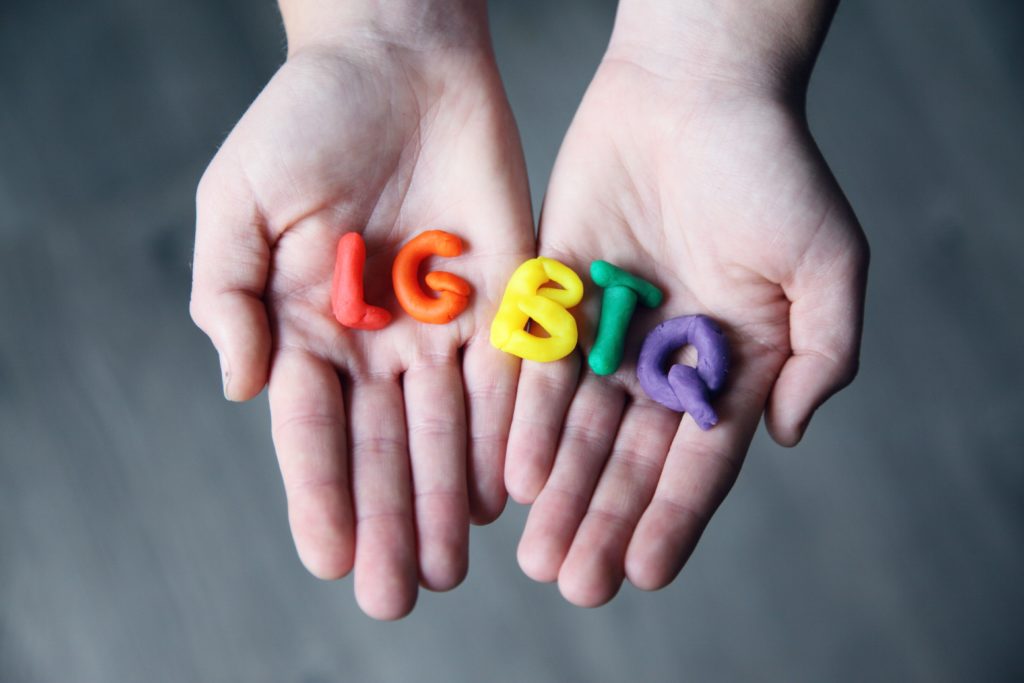They feel blissful when I bless them,
But they mocked me for evermore.
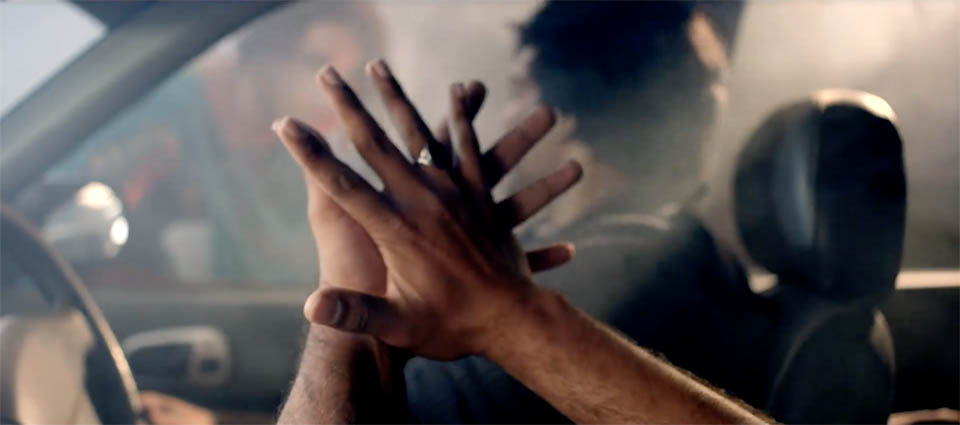
-Priyanka Rathi
Such is the tyranny of the “humans” of so called ‘other gender’ – the LGBT
About “THEM”
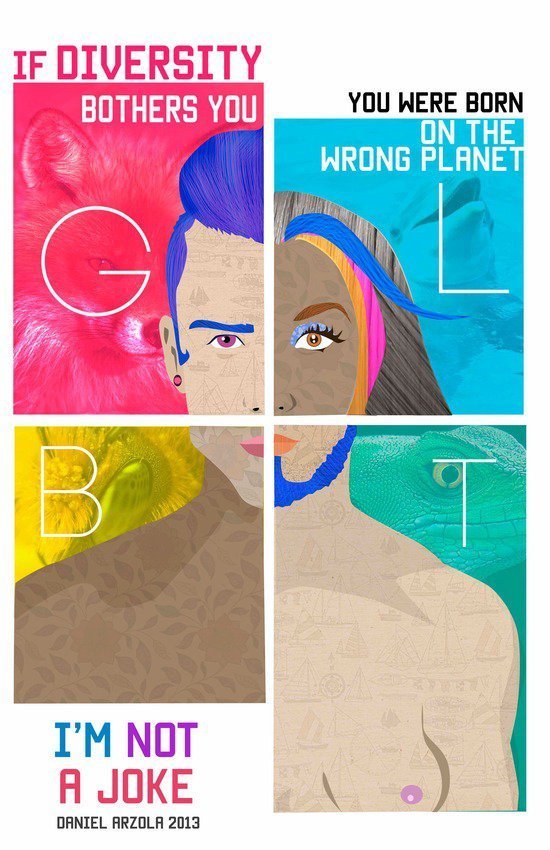
The very frequently heard term LGBT denotes the initials of Lesbian, Gay, Bisexuals & Transgenders. The term being in use since the 1990s is adopted from initials LGB, the one used to replace the term “Gay” about the LGBT community. It was believed by the activists that the term “Gay community” did not rightly represent all those to whom it referred.
LGBT history
The history of the LGBT community dates back to as far as the 3rd millennium where, in C, 9,600 B.C.E. Mesolithic rock art in Sicily depicts Phallic male figures in pairs that have been interpreted variously, including as hunters, acrobats, religious initiates, and depictions of male homosexual intercourse.
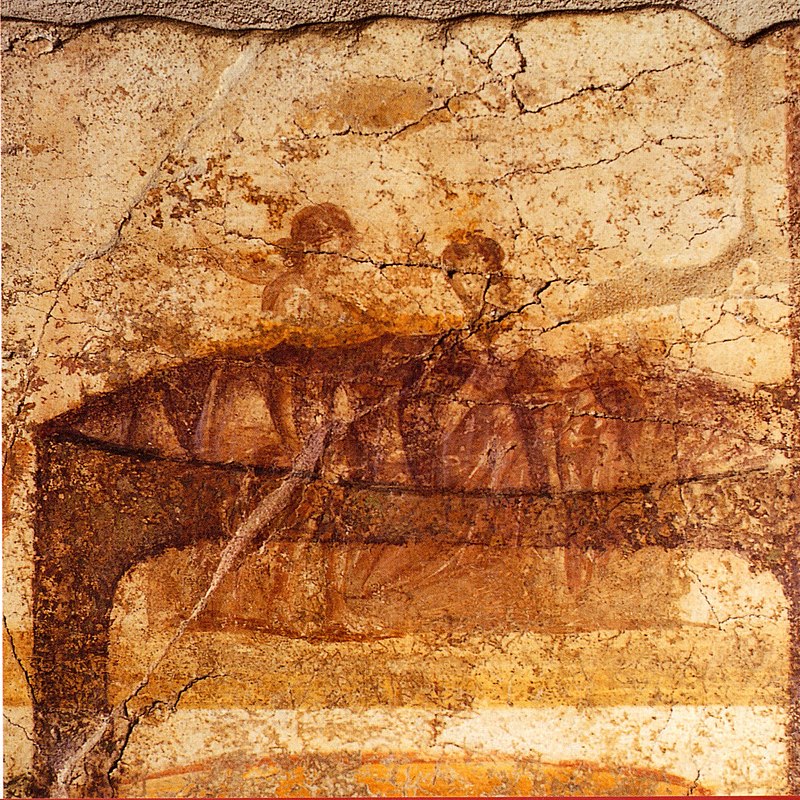
Wall painting of female couple from the Suburban Baths at Pompeii
History of LGBT in INDIA
Religion has played a role in shaping Indian customs and traditions. Ranging from the homosexual characters in texts to being neutral towards it, Hinduism, the largest religion in India has taken various positions.
Historical literary pieces of evidence indicate that homosexuals were not necessarily considered inferior in any way until the 18th century during British colonial rule.
Social Movements in their FAVOR…
LGBT social movements are those social movements that advocate for people belonging to this group in society.
The social movements may consider equal rights like the 2000s movement for “marriage equality or they may focus on liberation, as in “The Gay Liberation Movement” of the 1960s & 1970s.
Some of the LGBT Movements are described below:-
1) The Homophile movement (1945-1969)
Just after the world war 2, a lot of homosexual rights groups came live or were revived across the western world, in Britain, France, Germany, the Netherlands, the Scandinavia countries and the U.S.
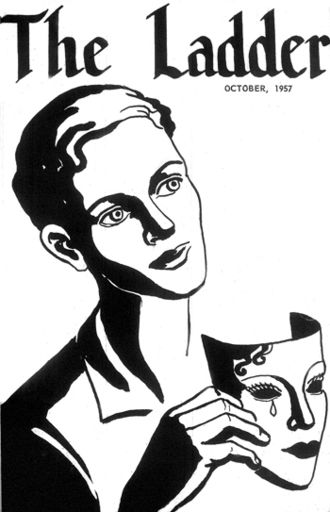
Cover of U.S. lesbian publication The Ladder from October 1957. The motif of masks and unmasking was prevalent in the homophile era, prefiguring the political strategy of coming out and giving the Mattachine Society its name.
2) Gay liberation movement (1969-1974)
Homosexuality was removed from the diagnostic manual of mental illness by the American Psychiatric Association activists.
Many LGBT got inspired to become radical by the new social movements of the 60s, such as “The Black Power” and “Anti Vietnam war” movements in the U.S., the May 1968 insurrection in France, and women’s liberation throughout the Western world, inspired many LGBT activists to become more radical, and the Gay Liberation movement emerged towards the end of the decade. When a group of gay men, lesbians and brag queens at a bar in New York resisted the police raid, this new radicalism was attributed to the Stonewall riots of 1969.
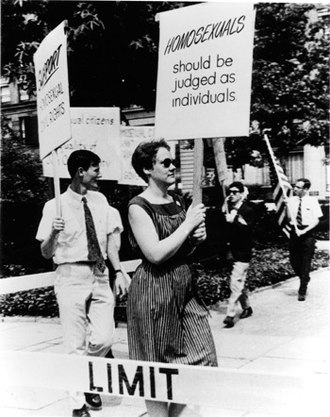
Gay equality activist Barbara Gittings picketing Independence Hall in 1965.
LGBT rights Movement (1972-Present)
In the 1970s LGBT Rights Movement, bisexuals became more visible. In 1972 a Quaker group, the committee of friends on bisexuality issued the “Ithaca statement on bisexuality” supporting bisexuals.
The statement which may have been “the first public declaration of the bisexual movement” and “was certainly the first statement on bisexuality issued by the American religious assembly” appeared in the Quaker Friends Journal and the Advocate in 1972.
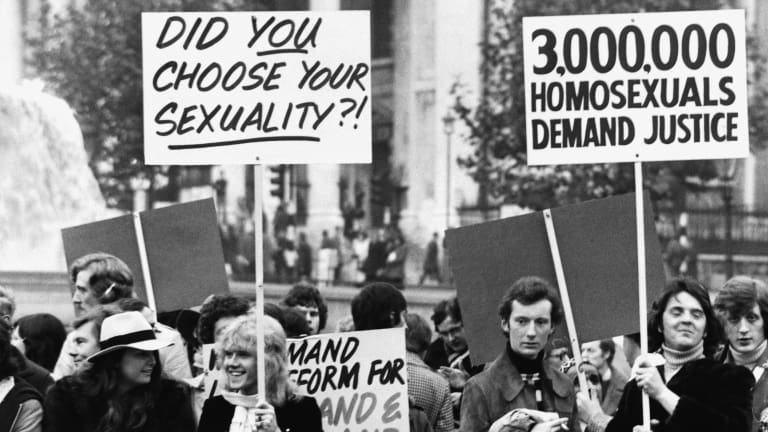
LGBT rights by countries…
Laws affecting LGBT people vary greatly by country or jurisdiction including everything from legal recognition of same-sex marriage to the death for homosexuality.
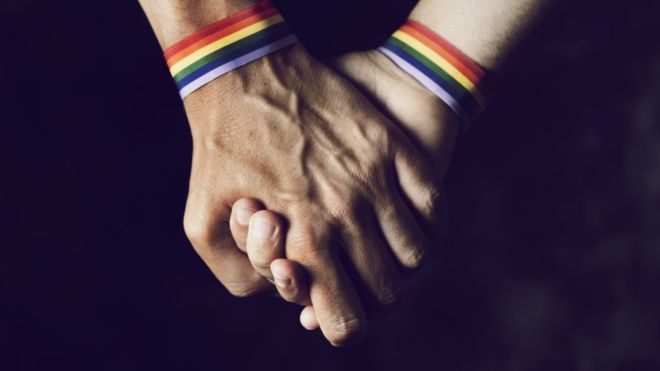
Laws that affect LGBT people include, but are not limited to, the following:
- laws concerning the recognition of same-sex relationships, including same-sex marriage, civil unions, and domestic partnerships
- laws concerning LGBT parenting, including adoption by LGBT people
- anti-discrimination laws in employment, housing, education, public accommodations
- anti-bullying legislation to protect LGBT children at school
- hate crime laws imposing enhanced criminal penalties for prejudice-motivated violence against LGBT people
- bathroom bills affecting access to sex-segregated facilities by transgender people
- laws related to sexual orientation and military service
- laws concerning access to assisted reproductive technology
- sodomy laws that penalize consensual same-sex sexual activity
- age of consent laws that may impose higher ages for same-sex sexual activity
- laws regarding the donation of blood by men who have sex with men
- laws concerning access to sex reassignment surgery and hormone replacement therapy
- legal recognition and accommodation of reassigned gender.
LGBT rights in India
Sexual activity between people of the same gender is legal. Although same-sex couples are not legally recognized currently by any form, performing a symbolic same-sex marriage is not prohibited under Indian law either. On 6 September 2018, the Supreme Court of India decriminalized homosexuality by declaring Section 377 of the Indian Penal Code unconstitutional. Homosexuality was never illegal or a criminal offense in ancient Indian and traditional codes but was criminalized by the British during their rule in India.

LGBT numbers worldwide
LGBT numbers across the world can be considered a debatable topic.
As per the Williams institute’s April 2016 report, it was estimated that 4.1% of Americans are identified as LGBT.
But, the report was created based on people who admitted themselves as LGBT. It is considered that 8 – 10% of any population belongs to LGBT.
In India e.g., in 2012, 2.5 million people identified themselves as LGBT before the ministry of India.
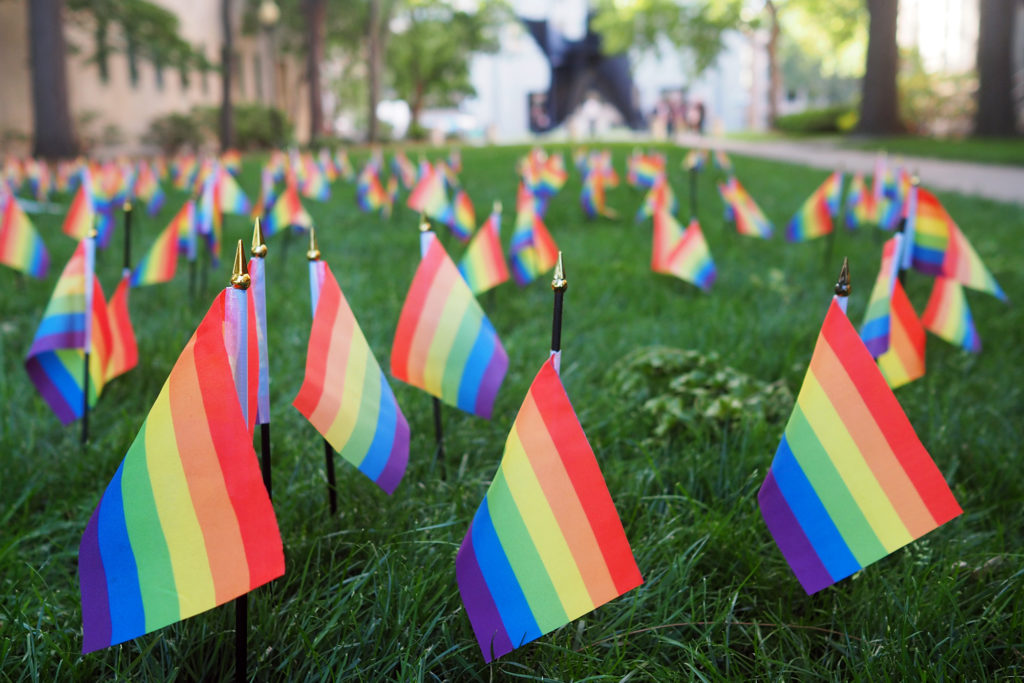
The LGBTs, since ages, have been looked upon across the world with a worse situation in certain countries like India.
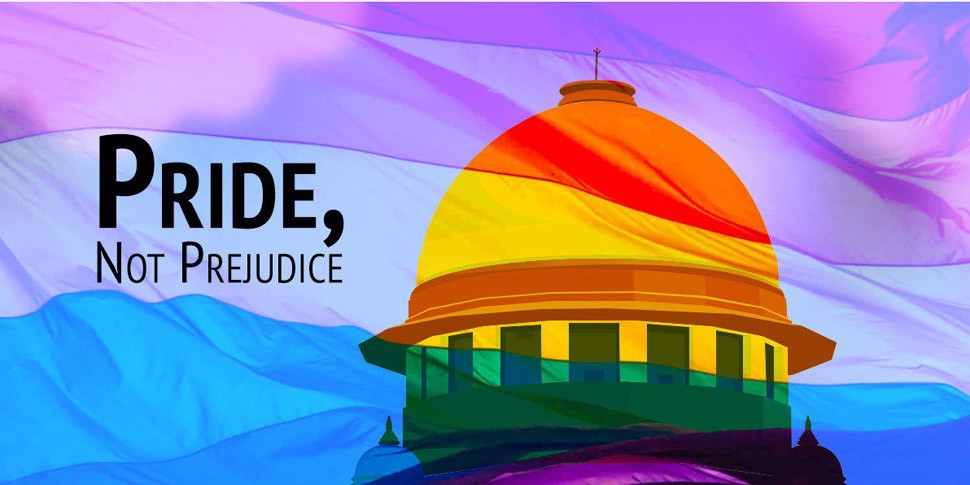
But, like other exceptions we, at Campus Haat, stand strong in support of LGBT .
This “Pride Month” we collaborate with “Unmukt”, a students’ collective of IIT Kanpur which acts as a forum for gender and sexual diversity, to celebrate our acceptance for LGBT because “Love is Love”
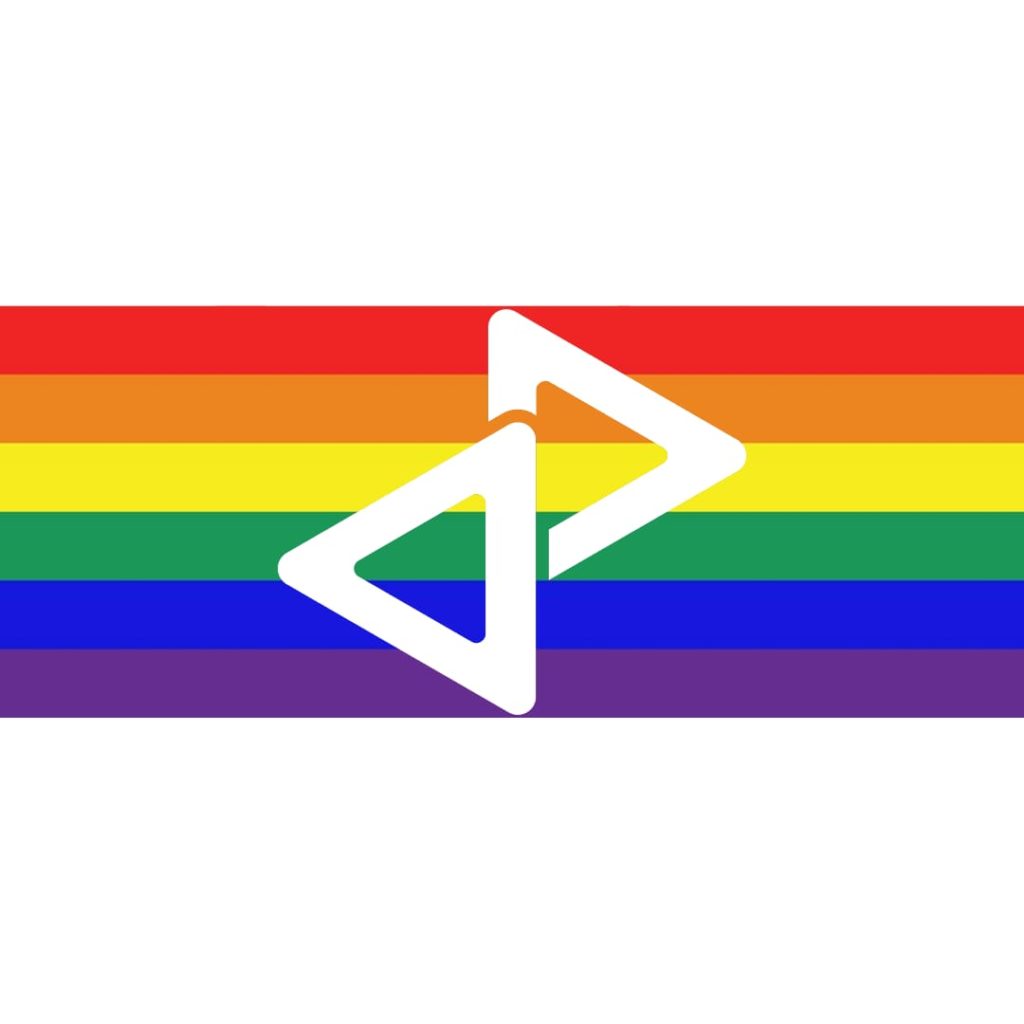
So stay tuned to Campus Haat and Unmukt on various social media portals and stay updated to our various activities conducted this “Pride Month”
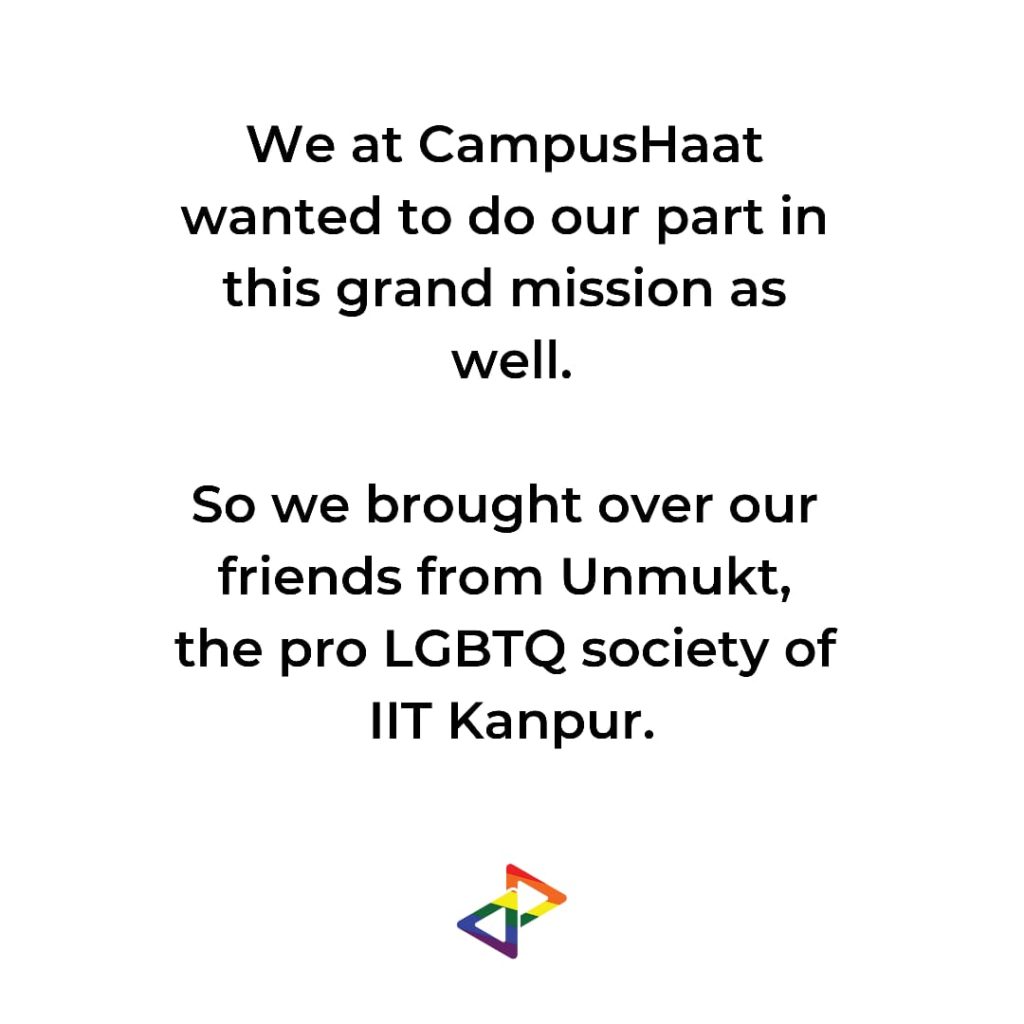
Some NGOs working for sexual minorities in INDIA:-
Queerythm
It is a registered community-based organization for the LGBTIQ
people. Started as a support group for queer individuals, we aim for a society free of discrimination against gender and sexual minorities.
CONTACT:-
+91-97455-45559
Facebook
https://queerythm.wordpress.com/about/
iCall
It is a mental health project initiated in 2012 by the School of Human Ecology, TISS – Mumbai. iCALL endeavors to provide professional and free counseling through technology-assisted mediums such as telephone, email and chat to anyone in need of emotional support, irrespective of age, gender, sexual orientation or race, and transcending geographical distances while ensuring confidentiality.
CONTACT:-
022-25521111
http://icallhelpline.org/
Dumdum Swikriti Society
It is an organization, located in Kolkata empowering sexual minorities, adolescents & youths by education them about sexuality & related issues. Generating greater understanding in the larger society of issues concerning sexual minorities, adolescents & youth.
CONTACT:-
+91-98317-43608
http://www.infosem.org/swikriti.htm
Campus Haat: A community platform
Follow us on
Facebook
Instagram
or visit us at
www.campushaat.com
[DISPLAY_ACURAX_ICONS]


